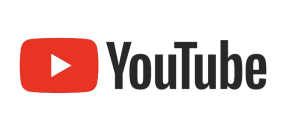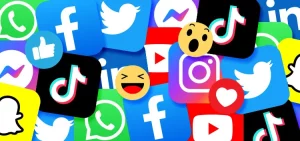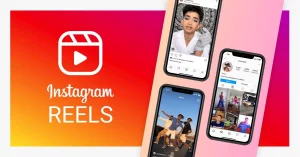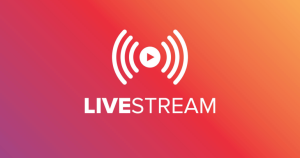Are Attention Spans Getting Shorter?
(PART ONE of TWO)
Are our attention spans declining? In this fast-paced, modern world we live in, time is of the essence. There is increasing demand for ways and inventions that can make our lives more time-efficient. Although, with this comes the pressure for us to achieve more in our waking hours.
But how has this rapid way of living impacted our cognitive abilities?
When you consider the fact that the things we engage with (adverts, social media videos etc) are now expected to grab our attention within a much shorter time frame, it’s not unreasonable to question what this has done to our attention spans over time.

Online Video Throughout the Years
The evolution of web-based video platforms is an interesting one. Initially, sharing a video with a mate consisted of forwarding videos via email. You would eventually get round to watching this once you had gone through the formalities of the “dial-up” process (this was to the detriment of your landline, though). It was, by no means, instantaneous.
Then, broadband came along and revolutionised the internet. Inevitably our time spent surfing the internet increased, including trolling through online videos. Not long after this, in 2005, Youtube, arguably the most ground-breaking video platform, hit our displays. Its debut had us whiling away hours on the latest uploads. Recommended videos would pop up after watching something, thus encouraging people to stay on the site for long periods of time.
To start with, Youtube allowed creators to upload lengthy footage to its site, but a 10 minute cap was introduced the following year in March 2006. This was to “prevent people from throwing up television shows and movies that they didn’t have the rights to, and the time limit afforded a pretty easy way to do that,” says Tech Crunch.
Then, “in July 2010, YouTube bumped it up to 15 minutes.” It has remained the same limit ever-since. However, the caveat to that is as follows: “If you are verified, your YouTube videos can be up to 12 hours long, or as much as 128 GB.” – Business Insider.

Social Media and Video
YouTube paved the way for others and, as time went on, new browsers began to spring up.
Fast forward a decade and, whilst Youtube still remained firmly at the top of the video sharing charts, social media was cooking up a storm. Facebook, in particular, had become huge and by February 2015, it was YouTube’s biggest contender. Records show YouTube was hitting 144 million unique video views a month, with Facebook not far behind, reaching a respectable 90 million a month. This, as we now know, would only increase further. – Medium.com.
Another platform that was a significant player in the timeline of video sharing was ‘Vine’.
“After 10 years of YouTube hogging the spotlight, Vine was released, and it quickly became one of the most addictive apps on the market. Competing with other, more established brands like Instagram and Facebook, the appeal of Vine was that its content had to capture viewer attention almost immediately, as Vines were only permitted to be six and a half seconds long.” – Verb.
This time restriction forced creators to be more selective and refined with their content. It also contributed to the culture we now find ourselves in, where videos are condensed into short clips.
Vines coincided with the new era of social media and patrons of the site often shared ‘vines’ with each other via social platforms and through messaging.
New Era of Social Platforms
Other social media platforms that have come into the limelight in more recent years are apps such as Snapchat and Instagram. Snapchat, and its many filters, came onto the scene in 2011. Its unique selling point being the capability to limit the number of views or length of time a video, photo or message could be viewed for. It was also the introduction of “stories” which expired after 24 hours. Snapchat was also one of the first apps to really utilise the front-facing camera and before long “Let me take a selfie” became a household phrase.
“By November 2013, “selfie” was appearing frequently enough in print and electronic media that the Oxford English Dictionary chose the word as its Word of the Year.” – Merriam Webster.
Facebook Acquires Instagram
In a bid to keep up with new trends, Facebook also threw its hat into the ring and sought to acquire Instagram.
“When Facebook made a bid to buy Instagram in 2012 for a record-setting $1 billion, many people thought Mark Zuckerberg was making a mistake.
But purchasing Instagram turned out to be one of the best tech acquisitions of all time, helping secure Facebook’s dominance in social media for years to come. It did that by quickly imprinting its influence on the famously simple photo-sharing app, adding new features that helped it grow to more than 1 billion users.” – Vox.com.
Originally, Instagram was a platform for displaying and sharing static, square (which was a key feature that made it stand out from others) photos. Eventually, Instagram became known for sharing videos almost as much as sharing photos…
Live Streaming
Prior to 2015, live-streaming was fairly unheard of. This relatively-new phenomenon rose in popularity after Twitter (now ‘X’)acquired the app ‘Periscope’. A year later, Facebook and Instagram jumped on the bandwagon and implemented their own live-streaming services. This propelled the platforms into the forefront once more.
Tik Tok on the Block
The devastation that was Covid-19 understandably increased the average time spent on social media. 2020 was the prime time for social platforms to up their game, and that’s exactly what ‘new kid on the block’ Tik Tok did.
“TikTok’s sprint towards world dominance began in earnest in 2018, when it first surpassed Facebook, Instagram, Snapchat and YouTube in downloads. The following year, it became the fourth most-downloaded non-gaming app in the world,” says The Guardian.
“In 2020, the Covid-19 pandemic poured gasoline on the app’s already-explosive growth. As billions of people struggled through repeated lockdowns, the app racked up downloads, reporting a 45% increase in monthly active users between July 2020 and July 2022”.
The Gen Z population is considered to be Tik Tok’s biggest demographic. “As of 2021, 27.86% of 13-17 year olds and 40.32% of 18-24-year-olds are using the platform to create and consume video.” – The Social Shepherd.
Tik Tok was the catalyst for the new wave of online videos. “When TikTok first began, videos on the app were only 15 seconds long. The short turnaround was tailored to capture people’s attention, perfect for quick consumption as they scroll through endless videos.” – Android Authority.
Shorter Videos and Lower Attention Spans
Although TikTok has since increased its time limits after multiple requests from tutorial creators and the like, this does not diminish the fact that the majority of videos posted to TikTok still seem to conform to the 1 minute time limit. After all, it has proven to be highly successful at grabbing the attention of viewers and ensuring they watch until the end before scrolling to the next video.
The app has become so lucrative that Forbes magazine wrote an article hypothesising the reasons for its vast popularity.
“TikTok is a unique, very niched app that is seemingly made for today’s younger generation, who are most of the time glued on their smartphones and bored. It’s appealing to their short attention span” Kenny Trinh to Forbes.
Kenny goes on to attribute some of its glory to the “advanced AI” algorithms it uses, which “learn user preferences and then provide customised video feeds to their users.

Be Reel
Shortly after Tik Tok’s rise to fame, Instagram, attempting to increase traffic to their platform, published a new feature on the app.
“Instagram reels were first introduced on August 5th, 2020, and were 15 seconds long. In an effort to compete with TikTok’s video frenzy, Instagram is pushing video sharing to the next level.” – Brand Mentions.
“Instagram is all about aesthetic lifestyle content – and Reels fits this model. To gain traction with Reels, creators should produce polished content that captures the audience’s attention with an appealing image in the first place” – Planable.
The Effect on Attention Spans
Do you find yourself drifting during shows and films more than you used to? If you’re not grabbed within the initial 5 seconds of a video, do you scroll past without giving it a chance? If so, you’re not alone. Studies show that over time, our capacity to stay focussed has diminished profoundly.
“We started studying attention span length over 20 years ago,” Mark said. “We would shadow people with a stopwatch, and every time they shifted attention, we’d click, ‘Stop’ In 2003, we found that attention spans averaged about two-and-a-half minutes on any screen before people switched. In the last five, six years, they’re averaging 47 seconds on a screen.”- CBS News.
These staggering results are enough to make you stop and think about the possible implications. The researcher goes on to explain that often the disruption in concentration was due to the participants flitting between different tasks/apps on their phones and computers. After going into her phone settings, one participant discovered that, throughout the day, she had unlocked her phone an astonishing 236 times. Having this distraction within arms reach at all times can hugely hinder our productivity.
“How can someone get anything done if you’re supposed to write a report, and 47 seconds later you’re switching to another app?” the article asks. “You do it with great difficulty,” answers Gloria Mark, author of Attention Span: A Groundbreaking Way to Restore Balance, Happiness and Productivity’.
Part Two
It’s safe to say, there’s plenty more to be discussed in the topic, including; in what other ways has this new minimalist and multi-tasking affected our daily lives? What issues come from having a lower attention span? We will go into more detail about this in part two of our blog.
Get In Touch
Are you or someone you know looking for work in the medical field? Team Support Healthcare are a team of leading recruitment consultants across the UK. We have opportunities all over the country for qualified and hard-working individuals. Get in touch today to find out how we can help you.


